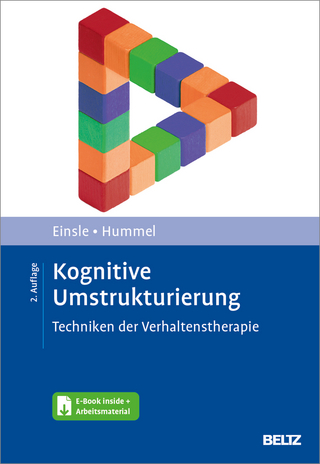
Continuous Issues in Numerical Cognition
Academic Press Inc (Verlag)
978-0-12-801637-4 (ISBN)
Dr. Avishai Henik is a Professor of Psychology at Ben-Gurion University of the Negev. He holds a consulting editorial position with several journals (e.g., Psychonomic Bulletin and Review, Journal of Experimental Psychology: General) and serves regularly as an ad-hoc reviewer for various journals in the field and for granting agencies. Dr. Henik has over 300 publications of which most are in peer-reviewed journals. He has edited or co-edited three books in the area of numerical cognition. A leader in the field, he was awarded a prestigious European Research Council (ERC) Advanced Researcher grant to continue his cutting-edge research on the contribution of non-countable dimensions to the development and understanding of numerical cognition.
SECTION I. DEVELOPMENT 1. Development of quantitative thinking across correlated dimensions Kelly S. Mix, Susan C. Levine and Nora S. Newcombe 2. Link between numbers and spatial extent from birth to adulthood Maria Dolores de Hevia 3. Catching math problems early: Findings from the number sense intervention project Nancy C. Jordan and Nancy Dyson 4. Contextual sensitivity and the large number word bias: When is bigger really more? Michèle M. Mazzocco, Jenny Yun-Chen Chan and Maria Sera 5. Learning, ageing, and the number brain Marinella Cappelletti 6. The development of counting ability - An evolutionary computation point of view Gali Katz, Amit Benbassat and Moshe Sipper
SECTION II. ANIMAL STUDIES 7. Number vs. continuous quantities in lower vertebrates Christian Agrillo, Maria Elena Miletto Petrazzini and Angelo Bisazza 8. Going for more: Discrete and continuous quantity judgments by nonhuman animals Michael J. Beran and Audrey E. Parrish
SECTION III. PROCESSES AND MECHANISMS 9. Number sense: What's in a name and why should we bother? Bert Reynvoet, Karolien Smets and Delphine Sasanguie 10. The distribution game: evidence for discrete numerosity coding in preschool children Alain Content and Julie Nys 11. Magnitudes in the coding of visual multitudes: Evidence from adaptation Frank H. Durgin 12. The ordinal instinct: A neurocognitive perspective and methodological issues Orly Rubinstein 13. Discrete and continuous presentation of quantities in science and mathematics education Ruth Stavy and Reuven Babai 14. The interaction of numerical and non-numerical parameters in magnitude comparison tasks with children and their relation to arithmetic performance Swiya Nath and Denes Szucs
SECTION IV. MODELS 15. Symbolic and nonsymbolic representation of number in the human parietal cortex Moriah Sokolowski and Daniel Ansari 16. What do we measure when we measure magnitudes? Tali Leibovich, Arava Y. Kallai and Shai Itamar 17. How do humans represent numerical and non-numerical magnitudes? Evidence for an integrated system of magnitude representation across development Stella F. Lourenco 18. The sensory integration theory: An alternative to the approximate number system Wim Gevers, Roi Cohen Kadosh and Titia Gebuis
| Erscheinungsdatum | 10.06.2016 |
|---|---|
| Verlagsort | San Diego |
| Sprache | englisch |
| Maße | 152 x 229 mm |
| Gewicht | 860 g |
| Themenwelt | Geisteswissenschaften ► Psychologie ► Allgemeine Psychologie |
| Geisteswissenschaften ► Psychologie ► Biopsychologie / Neurowissenschaften | |
| Geisteswissenschaften ► Psychologie ► Verhaltenstherapie | |
| Mathematik / Informatik ► Mathematik ► Allgemeines / Lexika | |
| Mathematik / Informatik ► Mathematik ► Algebra | |
| Mathematik / Informatik ► Mathematik ► Analysis | |
| Mathematik / Informatik ► Mathematik ► Arithmetik / Zahlentheorie | |
| Medizin / Pharmazie ► Medizinische Fachgebiete ► Neurologie | |
| Naturwissenschaften ► Biologie ► Humanbiologie | |
| Naturwissenschaften ► Biologie ► Zoologie | |
| ISBN-10 | 0-12-801637-X / 012801637X |
| ISBN-13 | 978-0-12-801637-4 / 9780128016374 |
| Zustand | Neuware |
| Haben Sie eine Frage zum Produkt? |
aus dem Bereich


